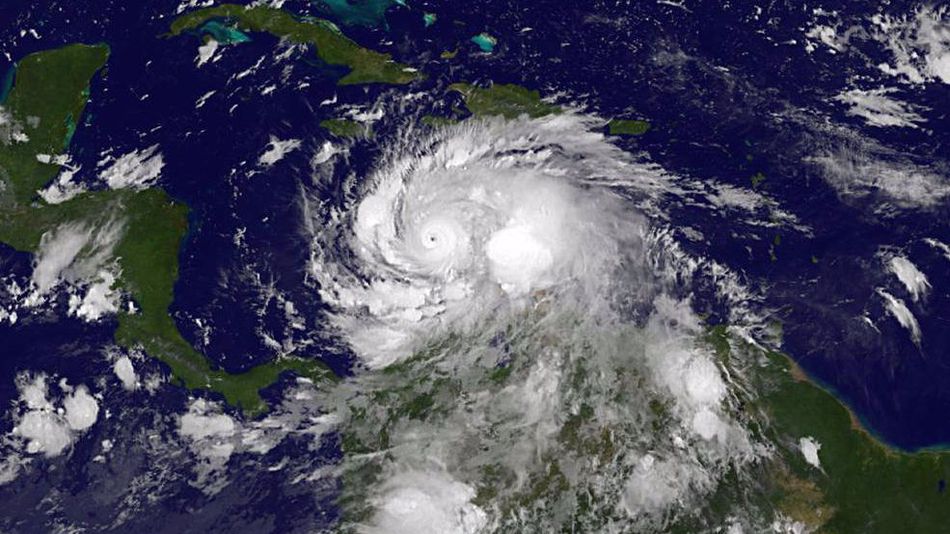Ed note. The worst Hurricane in a decade has just touched land in Haiti. Of course, any single weather event cannot be traced to climate change. But the fact is storms are getting stronger and coming with greater frequency because of climate change. And with the poorest country in the hemisphere once against bracing for a direct hit, the injustice of climate change is once again being laid bare for the world to see. In this edition of our feature “The Takeaway” Alanna Shaikh dissects a new UN report that examines the link between inequality and climate change. The piece is particularly timely with today’s news. — Mark
Climate change has always represented one of our cruelest injustices. Wealthy countries have driven climate change with outsized carbon emissions, while the poorest countries are most severely affected by its impact. Now, a UN report brings that injustice into full detail.
The report, “World Economic and Social Survey 2016: Climate Change Resilience – an Opportunity for Reducing Inequalities,” was produced by the UN Department of Economic and Social Affairs. It finds that the effects of climate change continue to fall not only on the most vulnerable countries, but on the most vulnerable inhabitants of each country. It also offers some good news. Well-designed policies can build climate change resilience and reduce the risks of climate change to vulnerable populations.
The report, in summary
The document begins with a discussion of why climate change resilience is needed, and then moves on to discuss the impacts of climate change, the policies which can ameliorate that impact and finally the ways that government can cooperate to make that happen.
The section on climate change resilience opens with an overview of the ways that climate change causes harm to human life, summing it up as “surface-water scarcity, increased frequency of storms and precipitation extremes, coastal flooding, landslides, wildfires, air pollution and droughts.” These factors will cause “loss of life, injury and negative health impacts, as well as damage to property, infrastructure, livelihoods, service provision and environmental resources.” From 1995-2015, most climate-related deaths were the result of flooding.
Tropical areas are at the most risk for future climate hazards, and poor countries have the least resources to mitigate those hazards. Wealthy countries will face the largest absolute economic losses, but lower-income countries will face the largest proportionate losses; they will lose a greater percentage of GDP. Countries with a high reliance on agriculture are particularly vulnerable to climate hazards.


The Climate Change – Inequality Nexus
The discussion of policy and climate change centers on the climate change – inequality nexus. Structural inequalities are at the core of climate change’s uneven impacts. It’s a cycle in which “initial socioeconomic inequalities determine the disproportionate adverse effects arising from climate hazards, which in turn results in greater inequality.”


The report cites previous documents defining climate change risk as the intersection of exposure and vulnerability. “Exposure refers to the presence of people, livelihoods, infrastructure, or economic, social or cultural assets in places and settings that could be adversely affected. Vulnerability has two facets… One is the propensity or predisposition to be adversely affected by climate hazards, which is referred to in this chapter as susceptibility to the damage inflicted by climate hazards. The other is the inability to cope with and recover from that damage.”
Policies that support climate change resilience need to focus on reducing that risk. According to the report, policy must address the root cause of inequality. It must also support immediate assistance after climate disasters and address disaster risk reduction. Finally, “These specific measures will be effective in reducing climate change vulnerability only if they are part of longer-term transformative strategies for sustainable development.”
One interesting recommendation is for policy that meets both short-term and long-term needs. The report calls for interventions that provide an immediate benefit and support the future. It offers examples, “…a policy that targets expanded access to resilient crops in previously fertile lands that became desert can improve the livelihoods of small-scale and poor farmers. A policy expanding the access to health care and cooling technology, making them more affordable for all, can reduce the pernicious effects of heat waves, particularly on the elderly.” These interventions, it argues, will both help vulnerable people and address deeper causes of vulnerability.
In many ways, for all of its research and analysis, the core message of the report is very simple: People with more money have more options and handle disasters better. Resources support resilience, and you promote resilience by ensuring access to resources. Good climate resilience policy is therefore good development policy.
What the report doesn’t say
This report doesn’t actually define climate resilience, and there doesn’t appear to be a standard UN definition for the term. Drawing from references in this and other UN documents, climate resilience is the capacity to respond to natural disasters and other climate impacts in a way that minimizes harm. It encompasses everything from insurance to switching to drought-resistance crops and diversifying income sources.
The logic in this report can be circular at times, in part because of the causal complexity of climate change vulnerability. At times, it feels like the report is arguing that we can improve resilience by making sure that we build resilience. Tautologies are not useful development policy.
One sentence takeaway
People with more access to resources are better at facing climate shocks; we should promote policies that give vulnerable people more access to resources.
